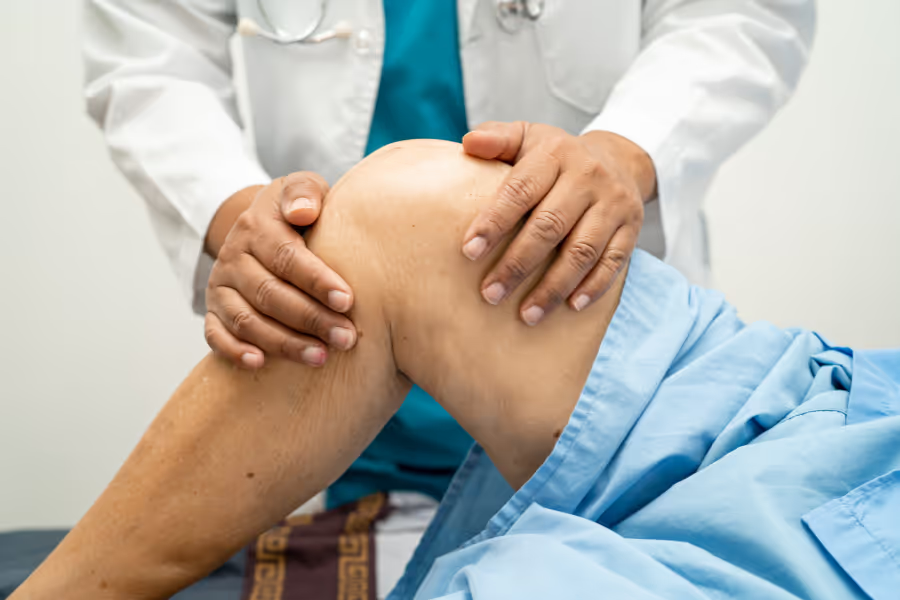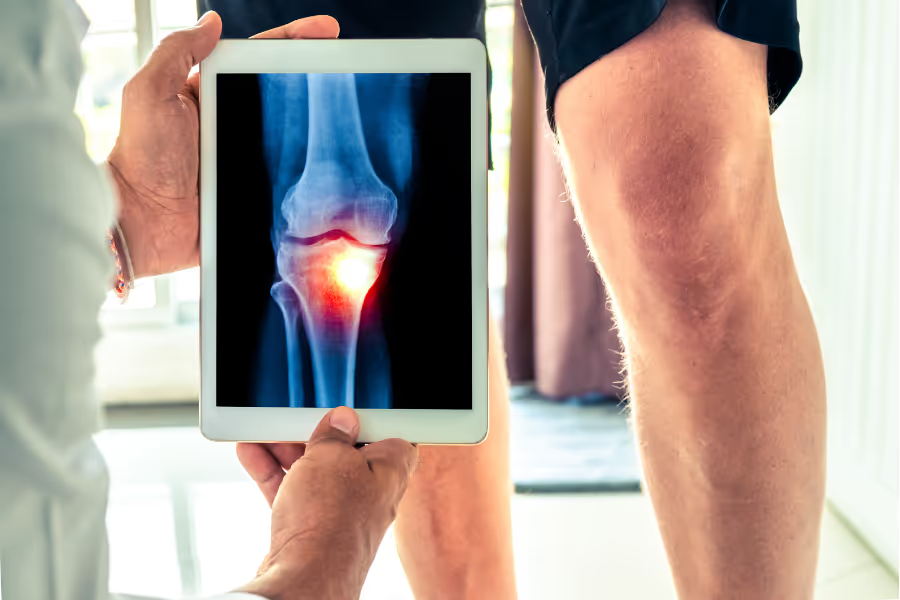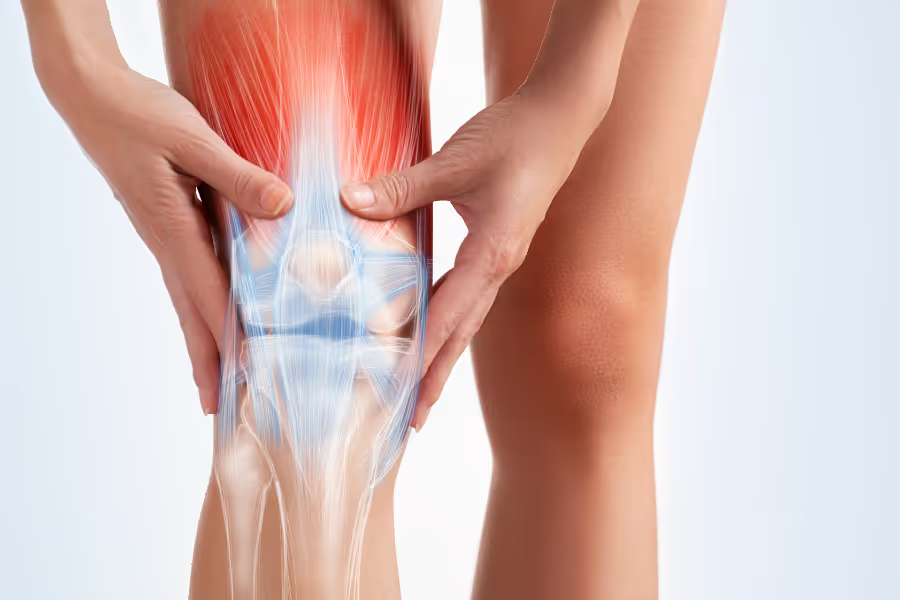Whether you need a partial or total knee replacement, find the right surgeon that fits your needs below, serving Canadians in major cities like Vancouver, British Columbia; Calgary, Alberta; Toronto, Ontario; and Montréal, Québec.
Informational purposes only, not medical or legal advice. Please consult your doctor or surgeon.

Knee replacement surgery swaps out the damaged parts of your knee for smooth artificial pieces so it bends and moves without pain.
Think of your knee like a rusty hinge. The smooth cartilage is worn down (arthritis), so it grinds and hurts. Surgery replaces:
If knee pain is keeping you from work, sleep, or simple daily movement, time matters. Exploring a private pathway gives you more choice, control, and flexibility while staying within Canadian regulations.
The number one reason you might consider a private knee replacement is time. Knee replacements have some of the longest waiting times in Canada, with some patients waiting ~2 years. Instead of waiting months or years for surgery, private clinics often offer surgery within weeks. For many, this means less pain and a quicker return to daily life.
Going private generally gives you a sense of control, which can be reassuring during a difficult time. When you choose a private knee replacement, you can:
Private pathways typically provide a clear quote and date, so you can arrange time off, caregiver help, and rehab. This certainty can ease anxiety and help families plan for recovery.
For some, waiting too long can mean more than just discomfort. Knee deterioration may worsen over time, making recovery harder. Timely surgery can reduce the risk of further mobility loss.

The surgery itself is no different from what’s performed in the public system. Surgeons use the same techniques, implants, and safety standards. The operation usually takes 2-3 hours.

The clinic will provide you with an extensive knee replacement surgery recovery plan that includes physiotherapy, pain management, and further monitoring. The recovery process varies from patient to patient. Your knee replacement outcomes might look quite different, so please seek further guidance from your surgeon.
Please take post-operative care seriously. The more diligently this process is followed, the better the outcome tends to be.
Some private clinics offer virtual follow-up appointments, while others coordinate with local providers in your home province.
Here’s a general guide to knee surgery recovery time:
Week 1:
Weeks 2-4:
Weeks 5-12:
Weeks 13-52:
Private knee replacement surgery in Canada generally ranges from $20,000 to $28,000.
Comparatively, in the United States, you can expect to pay CAD$35,000 to $60,000.
This estimate includes the core medical expenses: surgeon and anaesthesiologist fees, hospital or surgical facility charges, the knee implant itself, and immediate post-operative care.
Costs may be higher if a patient requires specialized implants or an extended hospital stay.
We’ve put together a detailed breakdown of the cost of a knee replacement in Canada.
Most quotes for private knee replacement surgery cover:
What’s usually not included:
Choosing your surgeon is one of the benefits of going the private route. Here’s what to consider and the key questions to bring to your knee replacement consultation.
A knee replacement isn't for everyone, but can become necessary. If measures such as physical therapy and injections no longer manage pain and stiffness in your knee, or you're worried about further damage, then it might be time to schedule an initial consultation with a surgeon.
No, you do not need a referral for private knee replacement in Canada. You can book a consultation directly with a surgeon, and they will review your condition, symptoms, and any previous treatments or diagnostics.
Your surgeon will provide you with guidance on how to prepare, but you can expect some pre-surgery exercises to help with stiffness, muscle weakness, and range of motion issues.
Home prep: We recommend taking the time to rearrange your home to prepare for the first few months after surgery. Ensure everything you need is within easy reach and remove anything that presents a tripping hazard (chords, sliding rugs, loose items). You might also consider installing safety equipment like a shower chair and safety bars in your bathroom.
Support: Try to arrange for someone to stay with you for the first few days after surgery, and someone close by who can reach you in the event of an emergency for the first several weeks/months after surgery.
Work: Knee replacement recovery is difficult. If possible, you will likely need to request time off work to recover.
Post-surgery practice: You might consider 'practicing' daily activities with substantially limited range of motion, such as getting in and out of the car, getting in and out of bed, putting on and taking off shoes, etc.
Individual risk varies with age, health, anatomy, implant choice, surgical technique, and rehab. Discuss your specifics with your surgeon.
Risks involved with knee replacement surgery (total knee arthroplasty)
Common and usually temporary
Less common
Uncommon but important/long-term
What increases risk
Risks of delaying or not pursuing knee replacement (when symptoms are significant/persistent)
When watchful waiting can be reasonable
When not to delay
As always, please consult your doctor or surgeon.
For a more comprehensive overview of the risks, please consult this article.
Partial knee replacement only replaces the damaged part of the knee (just one of the medial, lateral, or patellofemoral compartment). It is less invasive and leaves more natural bone, cartilage, and ligaments intact.
Partial replacement is suitable for patients with arthritis or damage confined to just one part of the knee—which applies to a fraction of knee replacement candidates.
Total knee replacement is more common, and involves replacing all three knee compartments. It's a more extensive procedure and removes more bone, cartilage, and ligaments. The recovery process is longer and feels less natural after the surgery.
Your surgeon will advise you which surgery makes sense for you.

Browse vetted knee surgeons across Canada. Compare prices, qualifications, locations.
BROWSE SURGEONS